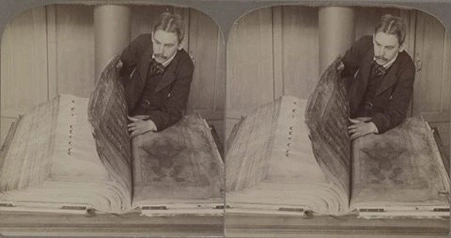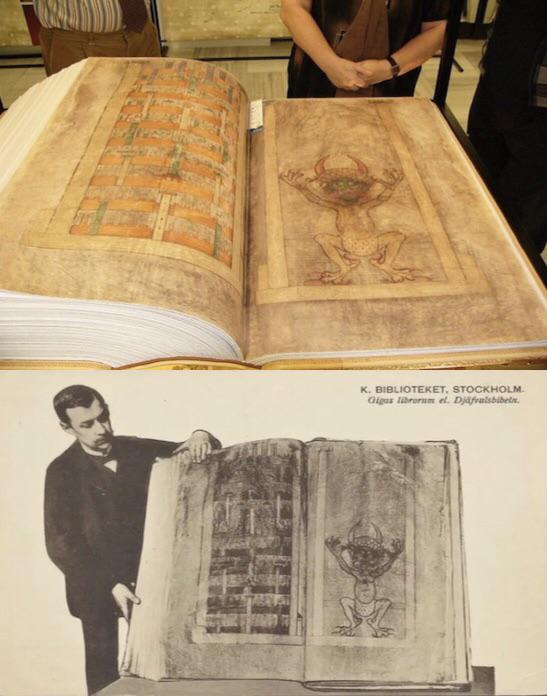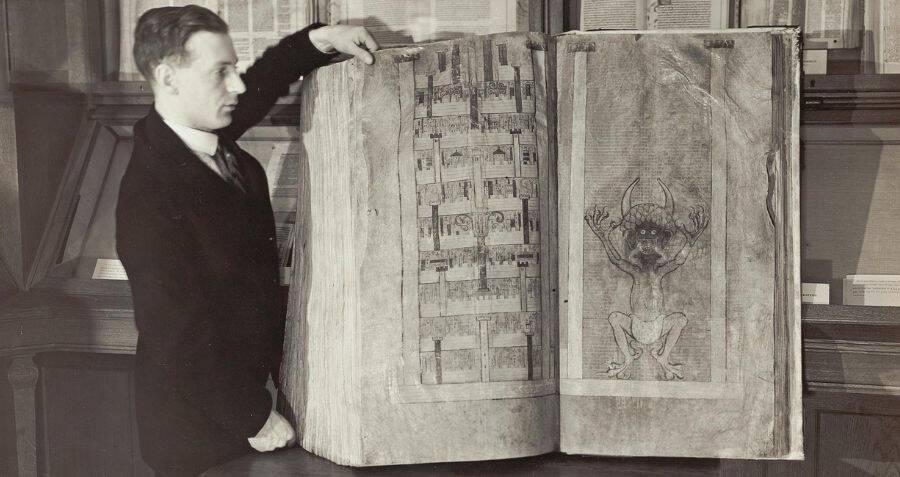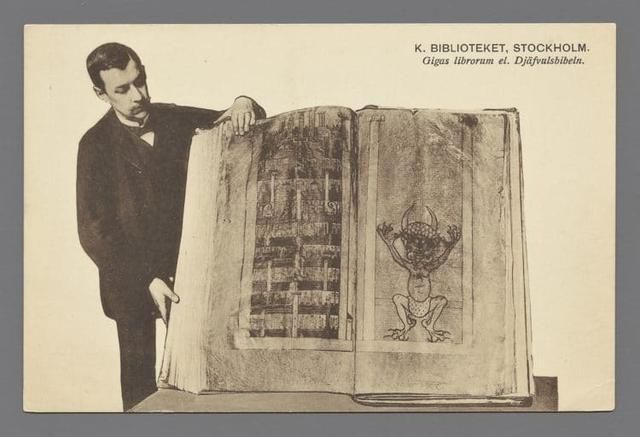




Inside it, we can read the entire Latin Bible, Isidore of Seville’s Encyclopaedia Etymologia, Josephus’ Antiquities of the Jews, Cosmas of Prague’s Chronicle of Bohemia, plus numerous writings describing magic formulae, exorcism rituals, and a calendar.


This picture of the devil is interesting in itself, since he is wearing a white loincloth with small comma-shaped red dashes, which have been interpreted as the tails of ermine furs, a common symbol of sovereignty. He also has a forked tongue, an image used in the Bible to denote a dishonest human being. Could the drawing actually be some form of political commentary?
Here is a quick timeline of the manuscript’s eventful life:
1204 to1230 the Codex is probably written at the Podlažice Monastery in the Kingdom of Bohemia – now part of the Czech Republic
1295-Podlažice pledges it to the nearby monastery of Sedlec, who sells it to the Benedictine Order of Břevno Monastery.
1594-Emperor Rudolf II takes the Codex “on loan”, and puts it in his castle in Prague.
1648-Prague is sacked by the Swedish army, and the manuscript ends up in Queen Christina’s library inside the Castle Tre Kronor.
1697- The castle burns down, and 18,000 books plus 5,700 manuscripts end up in flames. The Devil’s Bible survives because someone throws it out the window, injuring a bystander, and the book binding is seriously damaged.
1768- The manuscript is installed into the newly-built Stockholm Palace.
1819 – The book is re-bound.
1878- The Codex is moved by sleight to a new library building in the Humlegården park .
2007 –The manuscript is loaned out to Prague, where it is shown in the national library